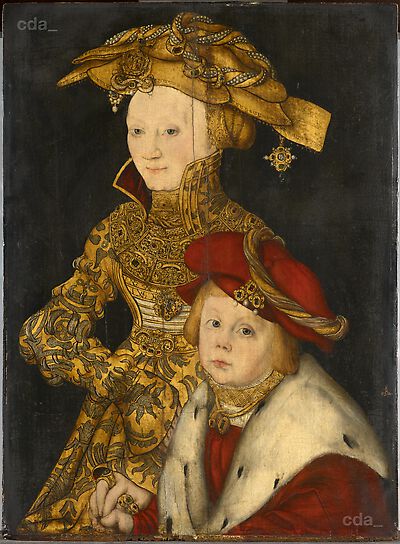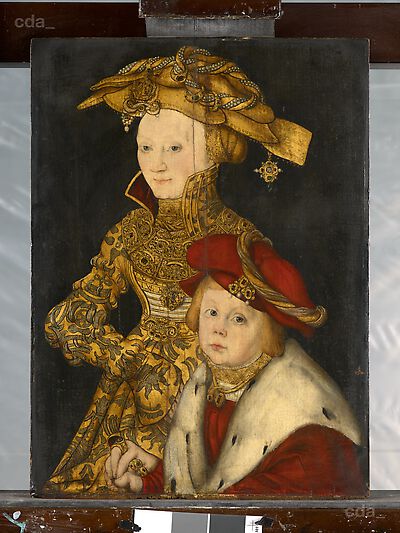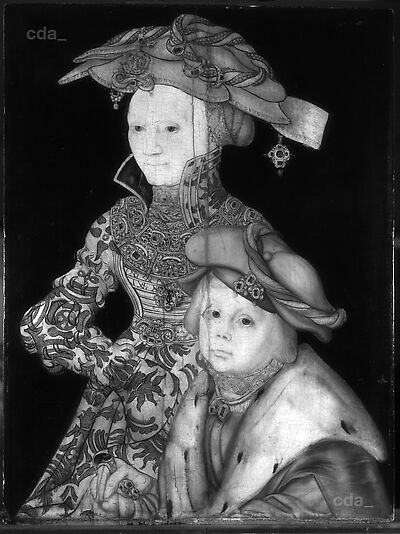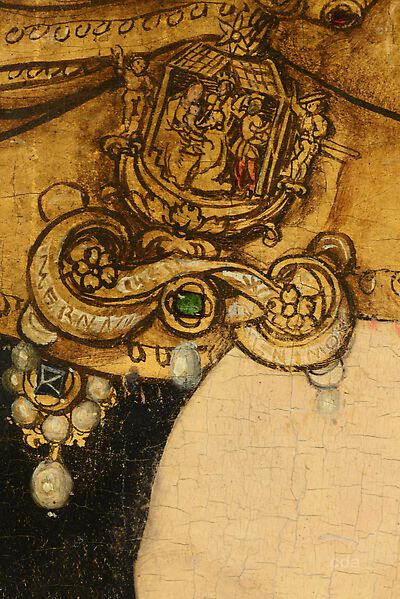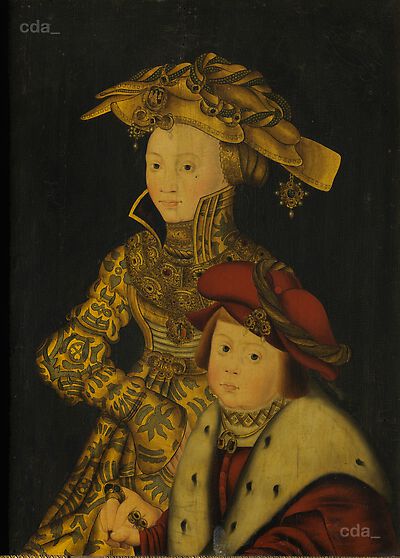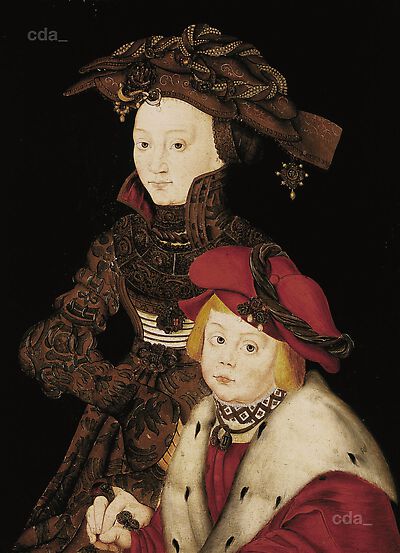With a growing interest in Early German Art about 1800 attention was also focused on Cranach's paintings. Numerous surviving versions of these portraits of a sumptuously dressed duchess and her son are attributed to Franz Wolfgang Rohrich (1787-1834). As early as 1840 Graf von Raczynski reported in `Geschichte der neueren
With a growing interest in Early German Art about 1800 attention was also focused on Cranach's paintings. Numerous surviving versions of these portraits of a sumptuously dressed duchess and her son are attributed to Franz Wolfgang Rohrich (1787-1834). As early as 1840 Graf von Raczynski reported in Geschichte der neueren deutschen Kunst on the existence of more that forty reproductions by the Nuremberg artist. Today numerous, almost identical, versions have survived in Wörlitz, Weimar, Munich, Paris, St Petersburg as well as in many private collections. As a result of the different dating of the paintings various suggestions have been proposed for the sitters: Duchess Katharina of Saxony with her son Moritz, Duchess Sophie of Saxony with her son Johann Friedrich I and Electress Sibylle with her son Johann Friedrich II the Middle. Whereas 19th century sources discuss the copies by Rohrich and the search for the original painting, more recent study in art history recognizes Rohrich's double portrait as an independent invention. The intimate depiction of the mother and son was viewed as contrary to the artistic conventions at Cranach's time. However recent technical examinations seem to suggest that the painting in the Royal collection, London is in fact the original painting from the Cranach workshop.
[Heydenreich, Exhib. Cat. Düsseldorf 2017, 292, No. 186]
